If you’re reading this, you’re already aware SEO isn’t optional. It’s necessary.
That’s the easy part right? The hard part is… well… SEO is hard!
If you’re just starting out, there’s a good chance that after a few Google searches you’re even more confused than when you started researching.
There’s just so much to wrap your head around:
The list goes on.
Well, fear not dear reader. This is where your journey starts.
We’re going to cover a lot of ground in this article, so hang on. I guarantee you that by the end, you’ll be well-equipped to start building an effective SEO strategy that will earn you higher rankings in the search engines.
But first, a quick note on why this matters in the first place!
Why You Need an SEO Strategy
There are some things in life, that you can just pick up and get rolling right away. SEO is most definitely not one of those things.
But we do know from the outset that SEO is worth it.
“We know, for instance, that achieving the #1 spot for a given keyword means getting about 33% of the clicks.“
– Jason DeMers, Forbes.com
Hopefully you don’t need to hear much more than that to be convinced this is important.
In order to rocket your site to that coveted top spot however, you’ll need a well-thought out plan to serve as your launch pad.
Without an organized approach, your efforts will be far too unfocused to affect any real results. Good SEO requires
- Discipline
- Persistence
- Patience
- Consistency
With that in mind, it’s easy to see why organization is going to be critical. By creating a master plan, you’ll be able to concentrate your efforts (and prerequisite research) on the elements that will really make a difference.
What are those elements exactly? Glad you asked! Let’s take a look…
The Components of an SEO Strategy
This is where the magic happens. While link-building, content, and the rest of the plan are all vitally important, this is ground zero for an SEO campaign. Consider it the “spine”, it’s the nerve center from which all other functions are derived.
Without a well-organized, mobile-friendly, zippy homepage, all of your efforts on the other items listed here would be largely in vain.
1. Keep your code clean and organized

Your site should always be written following best-practices for HTML and CSS. You should be using proper syntax, micro-formats, and markups.
There are a variety of reasons for this, but the most important (and easiest to understand) is that it helps your pages get indexed and crawled by Google.
Imagine you’re reading a text book. The table of contents is going to be your best friend from the get go. Further, you understand how to find particular information by browsing chapter titles, page numbers, etc.
Now imagine that Google is the reader, and your website is the textbook. Clean code will make it infinitely easier for Google to understand and categorize the information presented in your site. The faster your site can be crawled and indexed, the faster you’ll see improved rankings when you add new content or make other improvements.
There’s a direct correlation here. The most pages you have indexed, the greater your discoverability. Here’s a great example of clean HTML for you to look over.
2. Implement user-friendly site architecture
You’ll want to start viewing your site’s composition like architecture. If you use the wrong materials, take measurements poorly, or don’t plan well, you’ll end up with an unstable mess that not even a vagrant would want to spend a night in.
You might find this hard to believe but studies have shown that roughly 40% of visitors will leave a website if they don’t find what they’re looking for in the first 3 seconds. They back up and move to the next result in the SERPs.
3. Ensure your pages are useful and relevant
3 seconds.
That’s all it takes for someone to make their initial assessment of whether or not they’re going to find what they’re looking for.
If a visitor can’t figure out where to go next, where to sign up, or how to make a purchase, they’re going to bounce. Pogo-sticking has an impact on SEO, and you want to make sure you’re set up to minimize that.
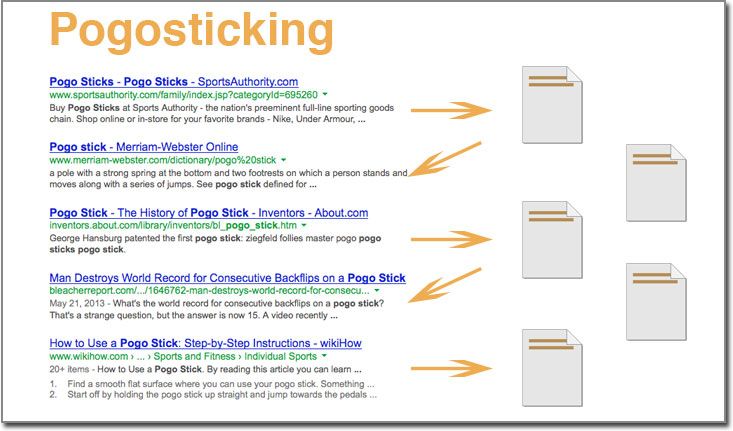
Image courtesy: Moz
We need to constantly be focusing the visitor experience around the most important actions they can take. This in turn should be related to the most likely reason they ended up on your site in the first place.
Being smart with your internal linking is another practice that can make a big difference. Make your main offers abundantly clear, and make sure their presentation is extremely user-friendly.
4. Optimize your site for mobile
By now, you’re probably sick to death of hearing about how you have to get on board with mobile marketing. It’s a subject that’s been beaten to death since everyone was freaking out about “mobilegeddon”.
Surprisingly enough though, there are still many websites out there that are not optimized for mobile visitors. If yours is one of them, consider the following data.
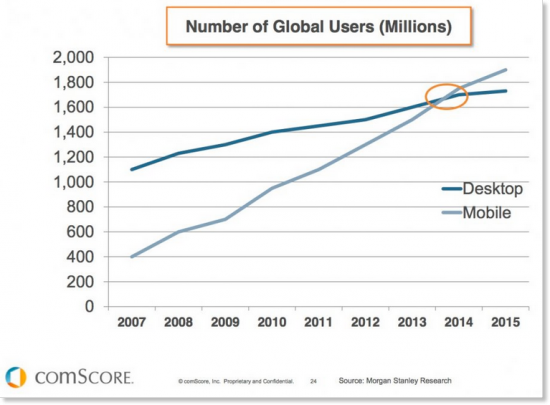
Image courtesy: comScore
As you can see, you’re actually targeting a smaller demographic if you’re only optimized for desktop visitors. Imagine that. If you got to pick between a larger or smaller non-specific audience with no strings attached, you’d actually be picking the smaller of the two.
Mobile is here, and it’s here to stay. The numbers will probably only continue to favor mobile visitors, so don’t waste any more time if you haven’t optimized for mobile yet.
5. Speed up your site
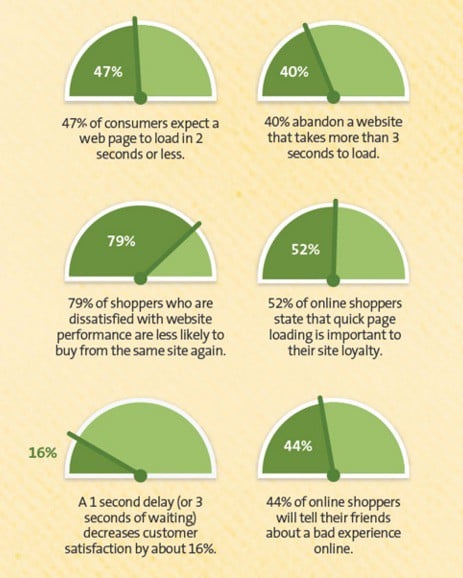
Image courtesy: Kissmetrics
Site speed is critically important to bounce-rate. It’s also a ranking factor! So don’t overlook this one just because it gets technical.
As per usual, in order to better understand user-experience, think about your own habits when browsing the web.
If you come across some website you’re interested in, how likely are you to wait around if loading takes longer than 6 seconds? What about 4 seconds? If you’re like the majority of users, you might not even make it that far.
6. Secure your site with HTTPS
Switching to HTTPS can be a boon for a lot of websites. You’re going to want to do a little research before you jump on this one, but going forwards it will most likely continue to grow in popularity and importance.
It can cause some site-speed issues in some cases, this is due to the fact that it requires some extra “handshakes” in order to serve up web content.
On the other hand, Google has confirmed that the switch will provide improved rankings. It may not be a big increase, but it’s a factor for sure. So consider this when you’re building your strategy.
7. Use local SEO to attract local customers
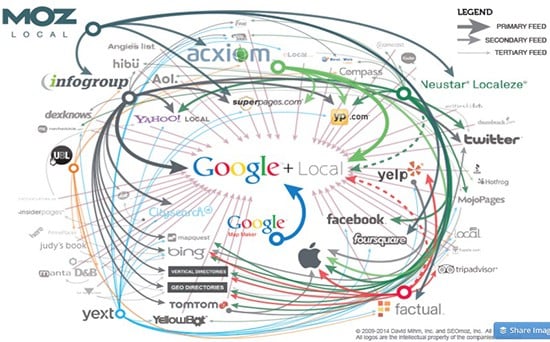
Image courtesy: Moz
Did you know 4 out of 5 people use search engines to find local information? What would you say if I told you 50% of consumers who perform a local search on mobile, visit a store within 1 business day?
Google discovered this (and a whole lot more) when they did a comprehensive study in 2014.
The conclusions we can draw upon examining the presentation are that local search is only getting more and more important and that every business needs to get to work if they haven’t already.
When it comes to optimizing your site for local search, NAP is the name of the game. NAP stands for name, address and phone number, and it must be consistent across all of your various business postings, listings, and profiles.
This is how Google determines if you’re business is located near searchers who might be looking for a product or service you provide. You can see why consistency would be important.
We wrote a heavy-hitting and concise post about how to maximize local SEO with minimal effort. You can read it here.
There are a variety of places to get listed locally, Moz has a great guide showing the most important listings for a variety of verticals.
8. Integrate your site with social media
Social media has an interesting relationship with SEO. While it may be unclear how much social signals affect discoverability, what’s not up for debate is the fact that it’s important to your brand and overall SEO strategy that you have a social presence.
You don’t necessarily need to claim every social media account you could, but there are a number of high-traffic social media outlets that can provide some SEO value no matter what Matt Cutts’ says.
From a marketing standpoint, it’s important that you not let your efforts become scattershot. It’s been proven much more effective to hone in on building an engaged audience on a few specific platforms.
“Some have tried using every social network, but the common result is multiple accounts with little to no interaction.
A better strategy is to focus on just a couple social networks or even one social network.”– Neil Patel, Quick Sprout
With that in mind, I’d recommend you take a look at this comprehensive guide. It will be invaluable to you if you want to learn some more about how to start using social media for your business.
If you’re a more advanced user already, here’s a recent article we wrote about how to improve your social media marketing.
9. Leverage content marketing in your SEO strategy
Content marketing is one of the most valuable tools anyone interested in SEO can use. It’s a critical part of any solid SEO strategy.
One study by HubSpot found that companies that have an active blog receive on average 434% more indexed pages than those that don’t. You may remember from above that the more indexed pages you have, the more likely your site is to be discovered.
“About 70% of the traffic each month on this very blog comes from posts that weren’t published in the current month. They come from old posts… sometimes years ago.“
– Corey Eridon, Hubspot
We’ve written at length about how to build a killer content marketing strategy. Check out that article to see an actionable (and tried and true) way to start generating results with your content.
Last but not least, truly leveraging blogging can take a lot of time and not all business owners have the resources to capitalize on it. If you’re in that camp, consider outsourcing it if that’s a possibility.
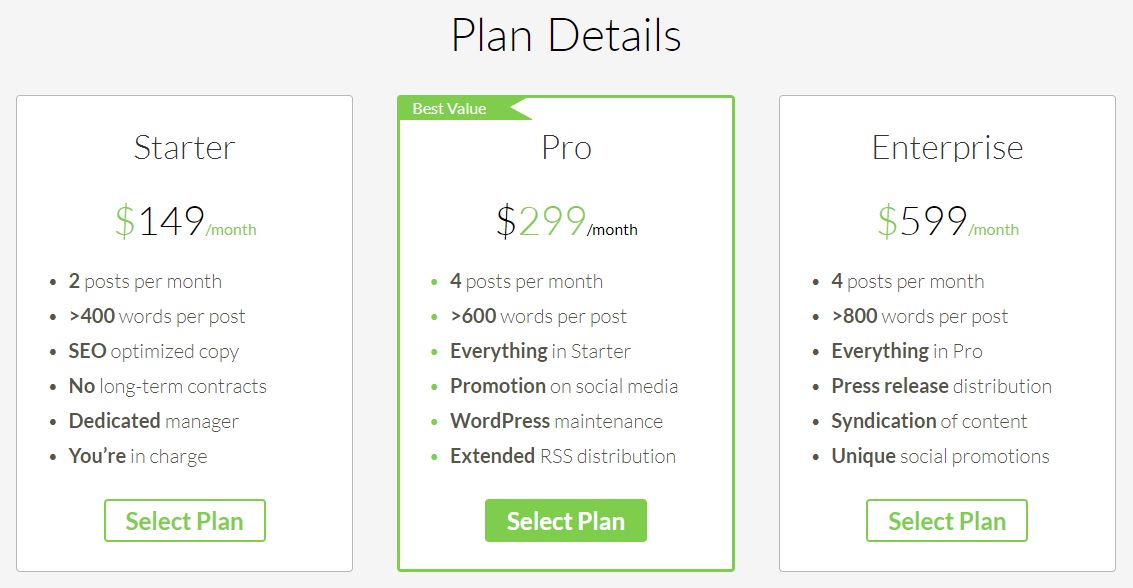
We offer affordable blog management plans that start as low as $149/month, and our writers are all professional US-based content creators.
10. Build quality links to your site
Link building has always been the backbone of effective SEO.
In fact, it used to be so important, that people started building spammy links all over the web. You may remember a time when blogs were filled with comment spam including links to various sites? Yeah… not fun.
Fortunately, those days are long gone. Google has advanced by leaps and bounds when it comes to penalizing sites that don’t provide a user-friendly experience. So you won’t get away with cheap tactics like that anymore.
But building relevant and high-quality links is necessary to earn higher rankings in the SERPs.
Here’s a link to a very comprehensive Moz guide on the subject. It’ll help you out whether your a complete beginner or moderately experienced.
Anything Else Your Highness?
You bet!
Believe it or not, this is just the tip of the iceberg. SEO is a complicated and tricky art to master.
But with some diligence, research and hard work, you’ll be up and running in no time.
If you decide you’d rather explore other options, our performance-based SEO service revolutionized our industry when we launched back in 2007. Since then, thousands of business owners have entrusted us to deliver lasting and compelling results. And we’ve done just that!
Learn more about our “if you don’t rank, you don’t pay” guarantee by visiting our SEO service page.








